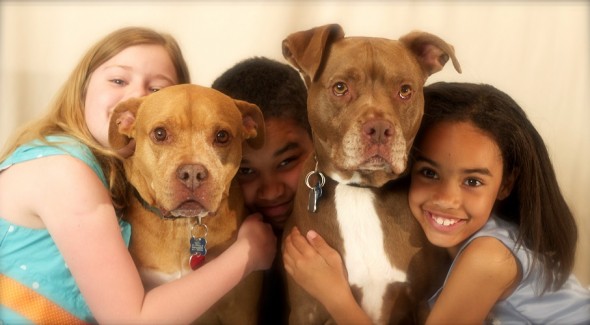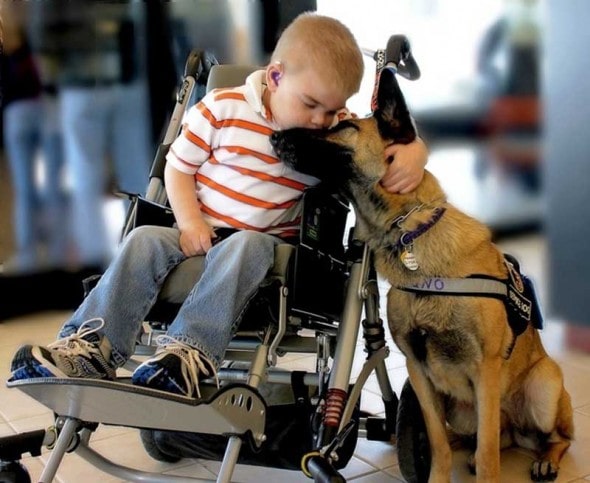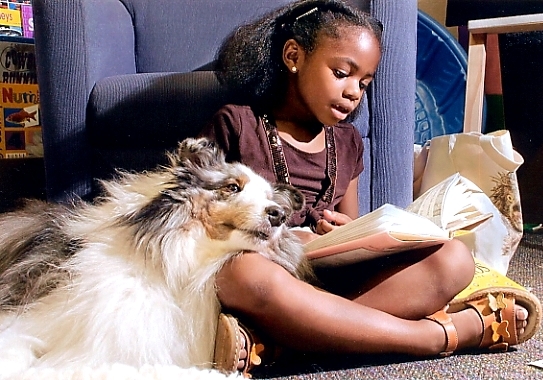By Denise Daniels | Washington Post
One of the greatest lessons of my life came from a dog. It was Christmas Eve, 1989, and our house was burning to the ground. As we stood in the snow in our jammies, our Newfoundland, Alfie, kept running back toward the house to make sure all the children were out and that everyone was safe. (We were, thankfully.) It was the most selfless, unconditional act of love I’d ever witnessed.
While hopefully not everyone’s experience will be that dramatic, pets can be invaluable at teaching families, especially children, “emotional intelligence,” or EQ—a measure of empathy and the ability to understand and connect with others. More than intelligence, EQ is the best indicator of a child’s likely success in school. In fact, kindergarten teachers have reported that EQ is more important than the ability to read or hold a pencil. And unlike IQ, which is fixed at birth, EQ can grow and be nurtured, and what better way than with a loving pet who is a gift to the whole family? Here are five ways in which pets can help children develop their EQ.
By developing empathy
One of the cornerstones of EQ is empathy, which should be taught and modeled starting in early childhood. A variety of research in the U.S. and U.K., including by the late psychologist Robert Poresky of Kansas State University, has shown a correlation between attachment to a pet and higher empathy scores. (This is hardly a new idea: Philosopher John Locke in 1699 was advocating giving children animals to care for so that they would “be accustomed, from their cradles, to be tender to all sensible creatures.”) The reason is obvious: Caring for a pet draws a self-absorbed child away from himself or herself. Empathy also involves the ability to read nonverbal cues — facial expressions, body language, gestures — and pets offer nothing but nonverbal cues. Hearing a kitten yowl when it wants to eat or seeing a dog run to the door when it wants to go outside get kids to think, “What are their needs, and what can I do to help?”
By teaching responsibility and boosting self-esteem
The old “I’m not getting a pet because I’ll end up taking care of it” refrain misses the point. Giving a child age-appropriate tasks — from teaching a toddler to “pet the hamster gently” to asking a 5-year-old fill a food bowl to letting your young teen walk the dog alone — and offering them positive feedback when they accomplish them, gives kids a feeling of competence that can boost their self-esteem, research says. It’s almost never too soon to start: When the UPS man comes to my daughter’s house, her 2-year-old daughter already knows to tell their Bernese Mountain Dog, “Riley, go to your rug!”
By reducing stress
At the National Childhood Grief Institute, we conducted a study with the Delta Society using certified Golden Retrievers in children’s support groups. A therapy dog would sit in front of an emotional child and put its head in the child’s lap. As the child started petting the dog, you could visibly see the child relax. We studied the blood pressure readings of the dogs and the kids, and the experience lowered the blood pressure of both.
By helping a child learn to read
Really. Reading dramatically expands a child’s understanding of the experiences and emotions of others, but learning to read can be stressful. And while reading out loud is critical for literacy, it can be torture for a kid who’s intimidated or embarrassed. The answer? Read to your pet. With an endlessly patient animal, children can go at their own pace and sound out difficult words with no fear of judgment. Lori Friesen of the University of Alberta has studied the use of therapy dogs to promote literacy learning in classrooms, including with her own dog, Tango, in her second-grade classroom. Friesen notes that “situational interest,” such as adding the novelty of a dog to a learning environment, can help capture children’s attention. Therapy dogs in particular offer a “multi-sensory learning experience.” They’re sociable, respond eagerly to humans and “possess a capacity for limited comprehension of oral language.” That helps.
By helping children express their emotions
As a counselor with public schools in Rye, N.H., Randall W. Bachman noted in an academic paper that children, when asked whom they would turn to with a problem, regularly named their pets. That doesn’t surprise me at all. It can be hard for children to talk with adults about powerful emotions. When I was with the National Childhood Grief Institute, I worked with children all around the world who were dealing with the traumas of war and natural disaster. In New Orleans after Hurricane Katrina and in Sandy Hook after the school-shooting tragedy, children had a hard time expressing sadness and anger. What helped them was being able to tell their story over and over, until they felt they were regaining control over a situation that felt out of their control. That’s where a loving animal is invaluable.






